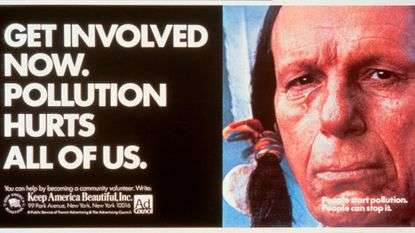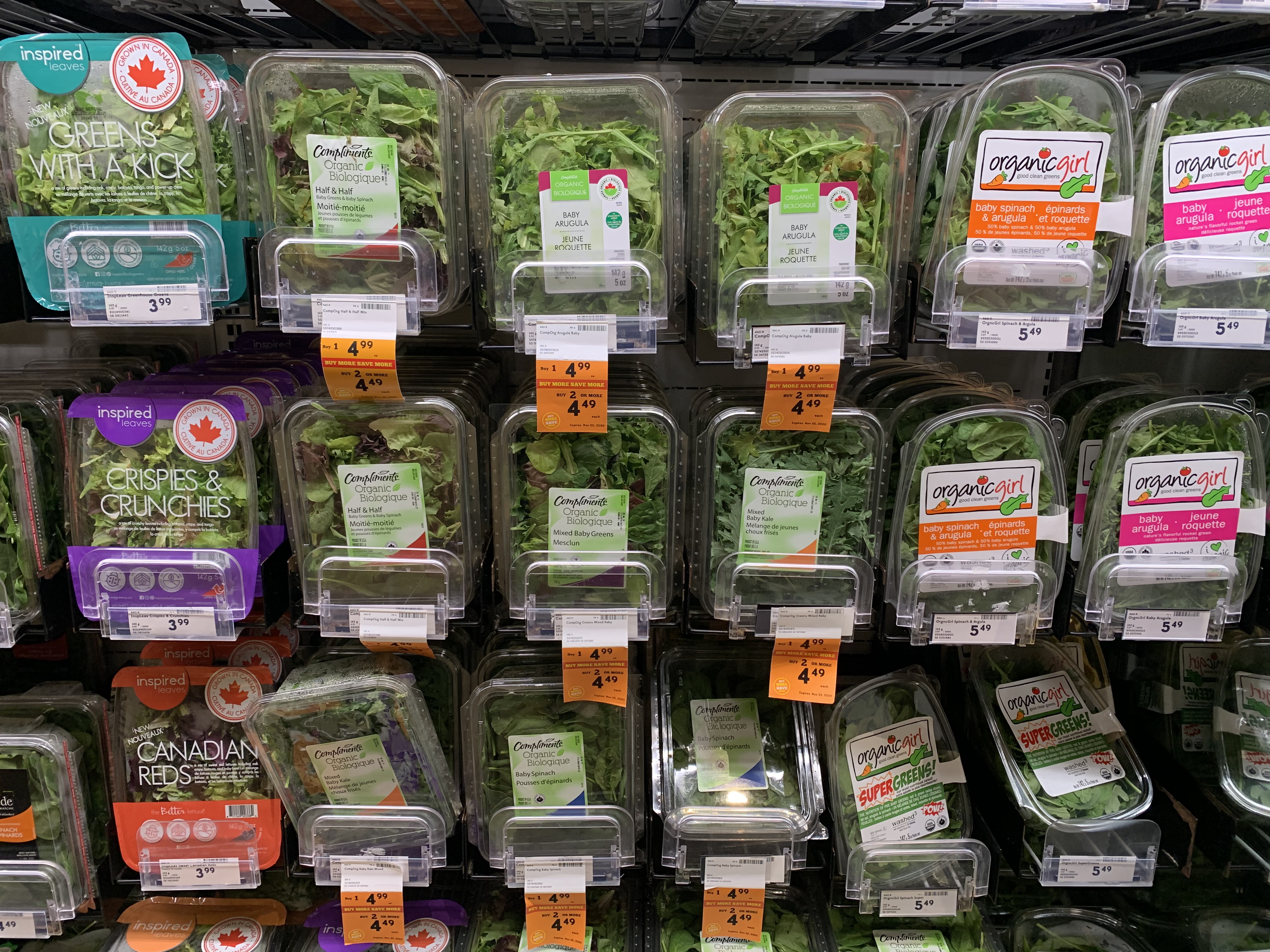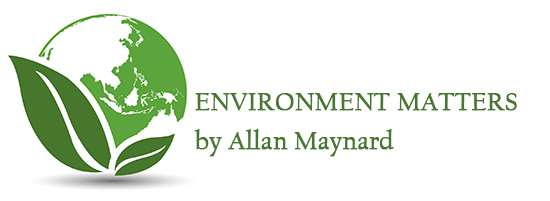Allan Maynard, MSc. – November 9, 2020

THE CRYING INDIAN – If you watched TV during the 1970s and 80s you would likely have seen one of the most iconic ads ever made. A buckskinned, black braided Native American (but called “Indian” in those days) is seen paddling down a pristine river but eventually enters a polluted harbor. He paddles his boat to a bank strewn with litter. As he exits his boat and wanders near a road someone flings a bag of trash from a moving car. The trash scatters at his feet. The Native American then looks into the camera; a single tear is seen rolling down his cheek. The narrator booms –“People start pollution. People can stop it.”
The ad in many aspects is a fraud. The “Crying Indian” is neither Native American nor crying. He was played by an Italian actor known for playing natives in western movies. The ad was sponsored by the organization “Keep America Beautiful”. What eventually became clear, the Keep America Beautiful organization was founded, and is still mainly funded, by the beverage and packaging industries. While anti-littering campaigns should certainly be lauded, the sinister reality behind this campaign was to shift blame for packaging waste in the environment towards the users of the products rather than the manufacturers. Thus began THE MYTH OF PLASTICS RECYCLING.
THE NUMBERS IN REVIEW – In my October 26, 2020 article – “We Are Drowning in Plastics”, I presented dramatic statistics concerning plastic waste. A quick review of the main facts:
- 6 billion (approximately) tons of plastic materials have been produced in the period 1950 to 2015 (Science Advances, 2017)
- The estimate to update that number into 2020 – approximately 9 billion tons
- Of the 6 billion tons of plastic ever made up to year 2015 – 9% has been recycled, 12% has been burned, and the remaining 79% has ended up in landfills or in the environment.
- The amount of plastic entering the oceans (earth’s last sink) is over 9 million tons each year. This is only a fraction of the total plastic waste generated.
WHAT THE PLASTICS INDUSTRY KNEW – For decades, we have been sorting trash believing that most plastic could be recycled. But the truth is, the vast majority of all plastic produced can’t be or won’t be recycled. In a joint investigation, NPR (U.S. National Public Radio) and the PBS series Frontline found that oil and gas companies — the makers of plastic — have known this reality all along, even as they spent millions of dollars telling the public the opposite.
The main points from this investigation are:
- Plastics industry had “serious doubt” recycling would ever be viable
The investigators dug deep into various archives and found internal correspondence. For example, the investigators state — “A report sent to top industry executives in April 1973 called recycling plastic ‘costly’ and “difficult.’ It called sorting it ‘infeasible’, saying ‘there is no recovery from obsolete products.’ Another document a year later was candid: There is ‘serious doubt’ widespread plastic recycling can ever be made viable on an economic basis.”
- The industry promoted recycling to keep plastic bans at bay
The investigators interviewed three former top officials from the plastics industry who revealed that the industry promoted recycling as a way to beat back a growing tide of awareness about plastic pollution along with calls for banning certain products (late 80s, early 90s). Recycling, the former officials told NPR and Frontline, became a way to pre-empt the bans and sell even more plastic. In fact the industry projection is to triple production by 2050.
- More recycling means fewer profits for petrochemical companies
The more plastic is recycled, the less money the industry will make selling new plastic. And those profits have become increasingly important with the declining market for fossil fuels. In essence the petrochemical companies are aware that a successful recycling operation will become their competitor. Or, if they undertake recycling themselves, it will reduce profits. It’s much cheaper (and thus more profitable) to make new products from raw materials than to make an inferior plastic product from waste.
The sad truth is that is that the plastics industry has promoted recycling mainly to sell more products. The public has been lead to believe that the recycling triangle on the bottom of plastic packing means the item can be recycled. The truth of the matter? – It’s complicated.

Is it really necessary to package lettuce like this? These plastic containers are made of #1 PET thermoform and are usually used for berry containers, salad containers, tomato containers, etc. They are not readily recyclable.
WHAT PLASTICS ARE THERE? WHICH ONES CAN BE RECYLCED
Recycling is determined by two factors: the market and city or municipal government programs. If there’s an organized recycling program along with a demand in the market for the plastics collected, then recyclers and companies will pay for post-consumer recyclables. The market demand is quite limited in reality, and it greatly depends on the type of plastic.
In general terms there are two broad categories of plastic – thermoset plastics and thermo-plastics. Thermo-plastics are plastics that can be re-melted and re-moulded into new products, and therefore, recycled. Thermoset plastics contain polymers that cross-link to form an irreversible chemical bond, meaning that no matter how much heat is applied, they cannot be re-melted into new material and hence are not recyclable.

Examples of plastic containers that can be recycled in curb side programs. These are #2 – HDPE – see table below.
In more specific terms, the following are the various formulations of plastics, what they are used for, the approximate proportions in the waste streams (up to and including the year 2015) and the possibilities for recycling. Note – the numbers – 1 to 7 referenced appear on the plastic items usually in a small triangle.
| # | Name | Examples | % | Re-cycling options |
| 1 | Polyethylene terephthalate (PET) | Beverage bottles, food jars, clothing fiber, cosmetic bottles | 11 | Most PET products can be re-cycled from curb-side programs |
| 2 | High-density polyethylene (HDPE) | Milk jugs, detergent bottles, toys, garden furniture | 14 | Similar to #1 – mostly accepted in blue bin programs |
| 3 | Polyvinyl chloride (PVC) | 2 forms – a) rigid – for plumbing, windows, bank cards and b) non rigid – inflatable products, electric wire insulation, etc. | 5 | Some items can be recycled – but there are difficulties in separating. |
| 4 | Low-density polyethylene (LDPE) | Plastic bags, food wrappings, squeezable bottles, | 20 | Only a few items can be recycled. The big issue is single use bags as they get caught in the sorting machines. |
| 5 | Polypropylene (PP) | Bottle caps, straws, coolers, diapers, clothing and carpet fibers, and some food packing – yogurt, margarine, etc. | 19 | Most cannot be recycled through curb side programs |
| 6 | Polystyrene (PS) | White Styrofoam – used in packaging and also for rigid food containers | 6 | Most municipalities do not accept Styrofoam products in curbside recycling programs |
| 7 | Other – category 7 | A grab bag of plastics not found in any other category. | 24% | Mostly non recyclable |
# – Refers to the number found in the triangle on each plastic item — % – Refers to the estimated percentage of each kind of plastic in the waste stream – up to 2015.
OTHER CONSIDERATIONS ABOUT RECYLING – In general – it is the plastics with the numbers 1 and 2 (mostly) that can be recycled in curbside recycling programs. Others usually need to be taken to recycling locations or are simply sent to landfills or incinerators. Careful citizens will take the time to sort their plastics and take, to recycling depots, those items not permitted in curbside bins. However, the main concern is that a large majority will simply put all plastic items in curbside blue boxes. In such cases – likely the majority – the items that cannot be recycled will be considered trash.
Mixed material such as zip lock bags can be a problem. For instance – take away coffee cups. While the outside of the cup is made of paper, inside is a thin layer of plastic. The PP (Polypropylene) film protects the liquid from seeping into the paper (and thereby burning you) and keeps your warm drink from cooling too quickly. Because there are two different materials, the cups cannot be recycled unless the materials are separated, which is impossible to do by hand and requires a special machine.
Any plastic material with food residues on (or in) it CANNOT be recycled. In order for plastics to be transformed into recycled goods, they must be of decent quality. So, it is important to wash the plastic before it goes in the blue box.
To sum up – most plastic we use cannot be recycled. The plastic industry knows this and yet continues to extensively market plastic for multiple uses. We users can do more by becoming aware and refusing to use single use plastic or buying items that are inappropriately packaged. However, regulation is the only way to revers the troubling trend towards increasing plastic use. Canada for instance will ban single use plastic in 2021. But this is only a start.
UPCOMING – 2 more articles.
The serious concern about micro-plastics
Long-term solutions – yes – we can get out of this mess.

Thank you for another comprehensive article confirming my suspicions on the viability of recycling and exposing the fraudulent practices of the users and producers in the plastics industry. Shame on those who knowingly threaten entire ecosystems, participate in climate chaos and allow the market to define our values! In order to live we must consume but how do we keep the world whole and healthy when the lure of convenience, packaging, and advertising is ever present? What is knowing without caring? I look forward to your next article on long term solutions.